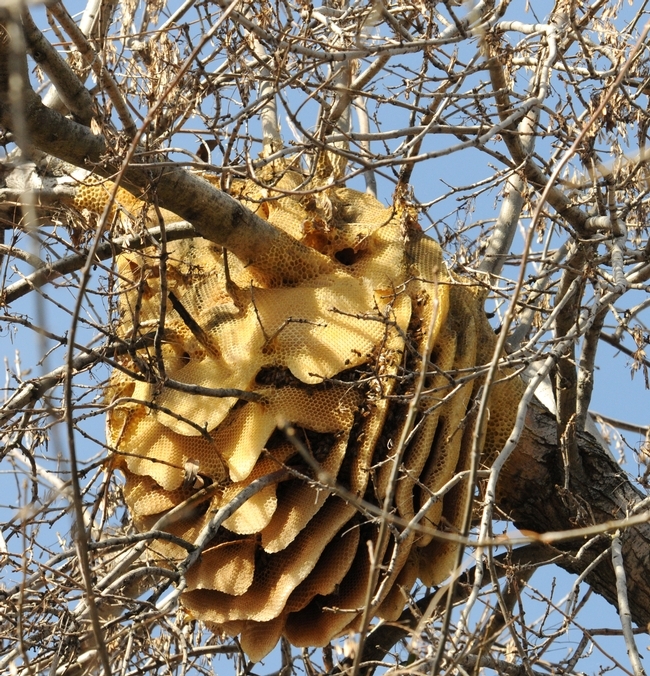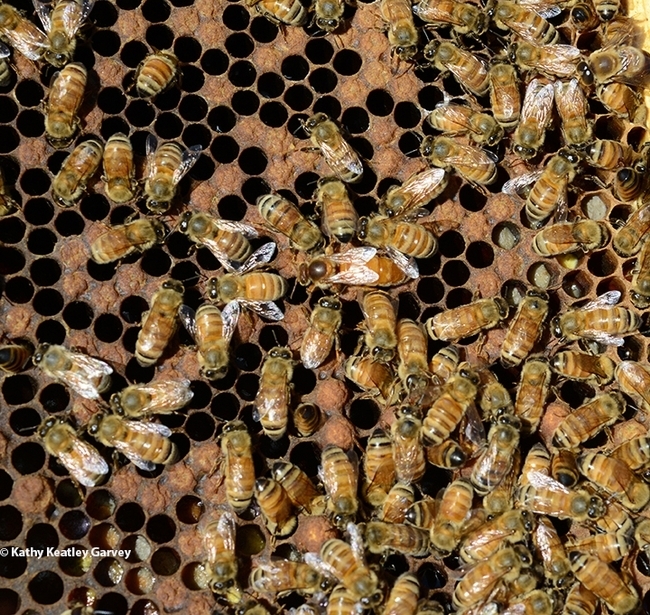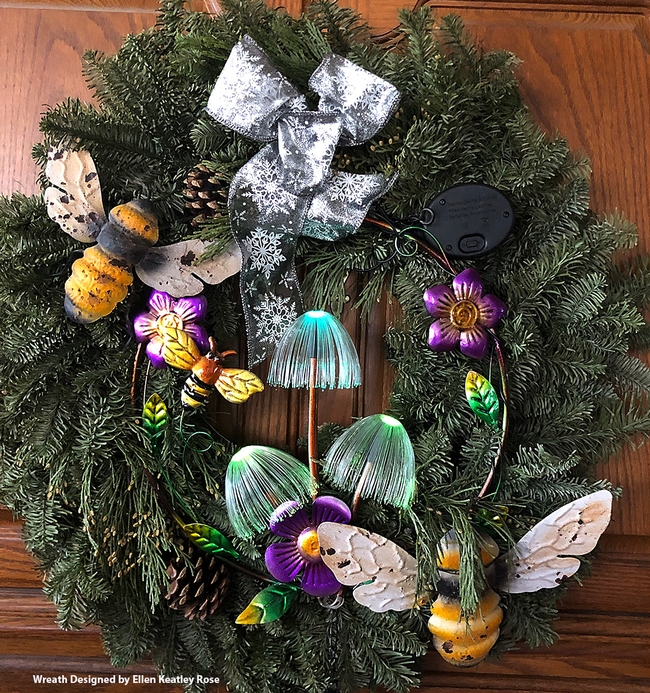It's bee-ginning to look a lot like Christmas...
All hail our littlest agricultural worker.
European colonists brought the honey bee (Apis mellifera) to what is now the United States in 1622. Specifically, the bees arrived at the Jamestown colony (Virginia). Native Americans nicknamed the honey bee "the white man's fly."
California would have to wait until 1853 for honey bees to arrive. That's when Texas beekeeper Christopher Shelton, brought his colonies to the San Jose area. A plaque outside the international terminal of the San Jose airport documents their arrival.
The plaque, "First Honeybees in California," reads:
"Here, on the 1939-acre Rancho Potrero de Santa Clara, Christopher A. Shelton in early March 1853 introduced the honey bee to California. In Aspinwall, Panama, Shelton purchased 12 bee hives from a New Yorker and transported them by rail, “bongo,” pack mule and steamship to San Francisco. Only enough bees survived to fill one hive, but these quickly propagated, laying the foundation for California's modern beekeeping industry. California registered Landmark No. 945 plaque placed by the State Department of Parks and Recreation in Cooperation with E. Clampus Vitus, Mountain Charlie Chapter No. 1850, and in honor of San Jose City Historian Clyde Arbuckle, March 6, 1982."
According to atlasobscura.com, "In 1853, Texan Christopher A. Shelton purchased 12 hives of bees from an unknown beekeeper in what is now Colon, Panama. The bees, already transported to Panama from New York, were then sent up to San Francisco and Alviso, the nearest port to San Jose, by steamer. They then continued their journey via train and mule to the 1939-acre Rancho Potrero de Santa Clara where Shelton settled."
"Only enough bees to form one hive survived," the Atlas Obscura post related. "These German black bees (Apis mellifera mellifera) endured the tedious trek and were propagated throughout California and soon the whole of the West Coast. Shelton was not so fortunate and died alongside other prominent South Bay Residents of the time on the infamous Jenny Lind steamship explosion just a month after the receipt of his bees. His three hives—it didn't take long for his original stock to multiply—were sold at auction for $110 each, 22 times the price of a beehive on the East Coast."
Ever seen the inside of a hive? That's where the magic begins. You'll see "The Girls": the queen, nurse maids, nannies, royal attendants, builders, architects, dancers, honey tenders, pollen packers, propolis or "glue" specialists, air conditioning and heating technicians, guards, and undertakers.
And in spring, summer and early fall, you'll see "The Boys," the drones. They have one responsibility: reproduction. The drone mates in mid-air with a virgin queen, and then he dies--"and with a smile on his face," according to the UC Cooperative Extension apiculturist Eric Mussen (1944-2022).
As we celebrate Merry Christmas and the New Year, the bees could use some cele-bee-tion, too.
Merry Christmas and Happy New Year from the Bug Squad.
Attached Images:


